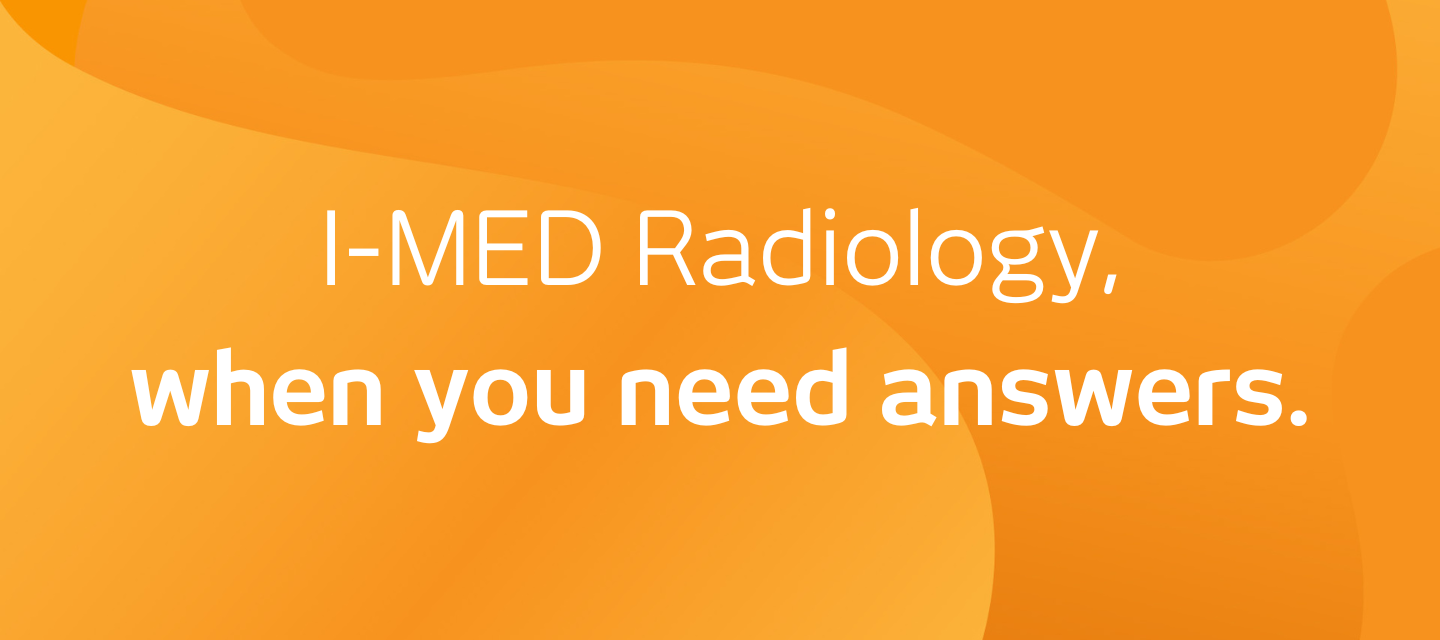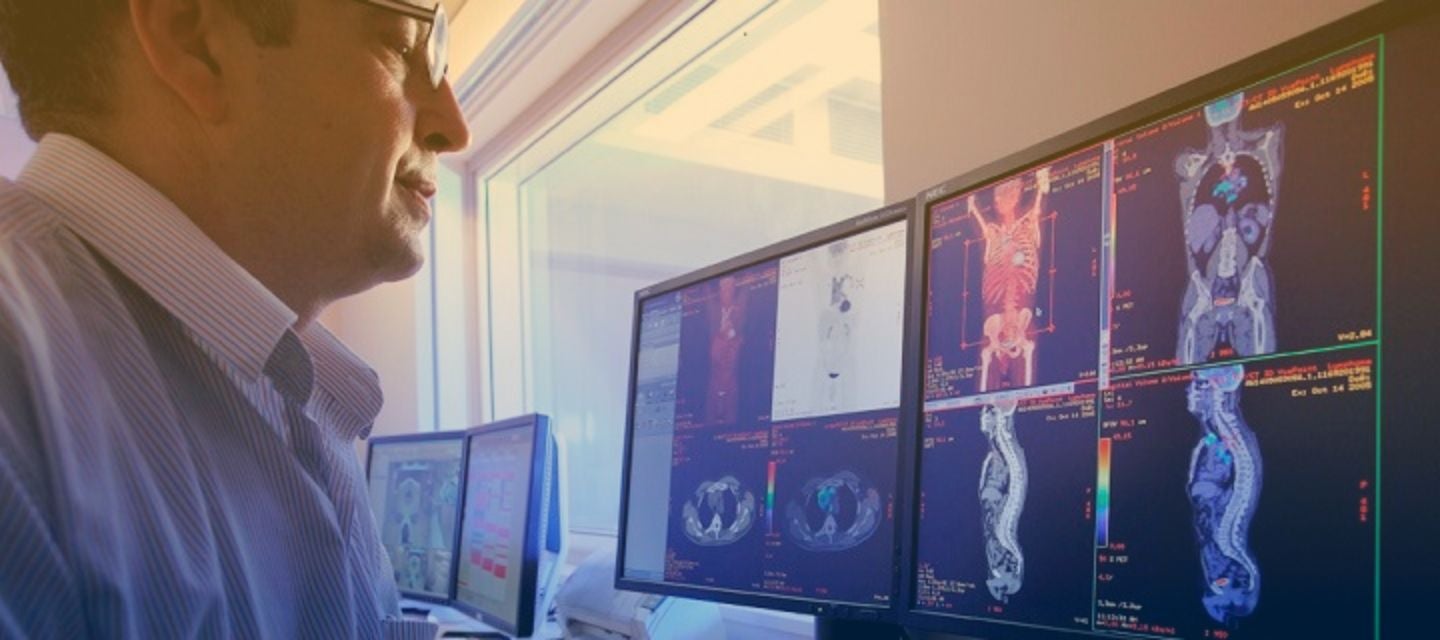

PET scan
PET scan

What is a PET scan?
PET stands for “positron emission tomography”. It is a nuclear medicine imaging test in which a small amount of liquid radioactive material is injected into your body and is used to diagnose a variety of diseases, including many types of cancers, heart disease and other diseases. The radioactive substance most commonly used in PET scanning is a simple sugar (like glucose) called FDG, which stands for “fluorodeoxyglucose”. It is injected into your bloodstream and accumulates in your body where it gives off energy in the form of gamma rays. These are detected by the PET scanner and a computer converts the signals into detailed pictures or images showing how tissue and organs are working. If you are having an FDG PET, your sugar metabolism (how sugar is used by your body) is imaged.
PET scanners are now commonly combined with computed tomography (CT) scanners, called PET-CT scanners. CT imaging uses X-ray equipment to create detailed images of slices of the inside of your body. The PET-CT combination allows any abnormality on the PET scan to be precisely located within the body, allowing for more accurate diagnosis of any problems. The PET or PET-CT scanner looks like a large box with a circular hole in the middle.
Watch video
Do you speak a language other than English? You can watch this video using translated subtitles - follow these instructions to select your language.
How do I prepare for a PET scan? keyboard_arrow_down
You will receive specific instructions based on the type of PET scan you are undergoing. If you are unsure about any aspect of preparation you should contact us.
It is important that you let our staff know if you are (or think you could be) pregnant or are breast feeding.
This study may not be suitable for pregnant women because of the radiation dose to the growing foetus. Please discuss this with your doctor.
Women who are breastfeeding and people who are the primary or sole carer for small children may need to make special preparations for after the test, to stop breastfeeding for a short time, and to avoid close contact with young children. This is due to the small amount of radioactivity your body may release for a while after the test. Talk to your referring doctor or our clinic staff for details.
Bring with you to your appointment any previous X-ray or radiology images you have, as comparison with these by the nuclear medicine physician (a specialist doctor), who looks at and interprets your PET scan, can be very helpful.
Generally, you will be asked not to eat or drink anything for several hours before the PET scan because this may alter your sugar metabolism and may affect the quality of the images or pictures. Drinking water is usually acceptable. If you are diabetic, you will be provided with specific instructions and may need to stop taking some diabetic medications before having the scan.
You need to wear comfortable, loose clothing and will generally be changed into a hospital gown. It is important that you are not wearing metal, including jewellery, watches, zips and bra hooks as these can affect the quality of the images produced.
What happens during a PET scan? keyboard_arrow_down
After you arrive at the clinic, a nuclear medicine technologist will explain the procedure and prepare you for the scan. You will be asked to change into a gown. A small needle will be inserted into a vein, usually in your arm or the back of your hand, to fit an intravenous line (a thin plastic tube) through which the liquid radioactive material is injected. A brief medical history will be taken to ensure the optimal scanning method is used and to also help with subsequent image interpretation. Your blood sugar level will be checked, as high or low blood sugar levels can alter the appearance of the scan. The radioactive substance is then injected into your vein through the intravenous line.
If you are having an FDG PET scan, you will be asked to rest quietly in a bed or arm chair, avoiding movement or talking for 90 minutes. During this time you will be alone as there is limited room for visitors, and it will prevent your friends or relatives from receiving unnecessary radiation exposure. You may be asked to drink some contrast material that moves through your stomach and bowel and helps to improve the interpretation of the scan. Very occasionally, depending on the medical condition, a catheter (a thin flexible tube) may be placed into your bladder to help improve image quality.
You will then be moved to the scanning room and positioned on the PET scanning bed. It is important to remain as still as possible during the scan as movement can result in reduced image quality and the images may be blurry. Therefore, if you are uncomfortable after being positioned on the bed please tell the technologist.
If you are having a PET-CT, the CT scan is performed first and takes less than 2 minutes. The PET scan takes approximately 30 minutes but the time will vary depending on the regions of your body being scanned.
The intravenous line will be removed before you leave.
How long does a PET scan take? keyboard_arrow_down
This will depend on the type of scan being performed but you can expect to be in the PET imaging department for between two to three hours. The time on the PET scanner is typically 30 minutes but time is also needed for preparation. When the scan is completed you will be asked to wait while the images are checked to make sure they are clear. Occasionally, there is a need to obtain more images following this check.
What are the benefits of a PET scan? keyboard_arrow_down
PET scanning is a powerful diagnostic test that provides unique information which may assist in making a diagnosis, in determining treatment or providing a prognosis, that is, the likely outcome of any disease. Nuclear medicine tests, including PET scanning, can provide information on how tissue or organs are working, which cannot be obtained from other imaging techniques. PET scans may detect disease earlier than other types of scanning by identifying early changes to tissue and organs.
Who does the PET scan? keyboard_arrow_down
A nuclear medicine technologist operates the equipment during the procedure. The technologist will also be involved in preparing you for the scan. A doctor who has received highly specialised training in nuclear medicine will oversee the procedure, interpret the images and provide your doctor with a report of the scan
What are the risks of a PET scan? keyboard_arrow_down
Nuclear medicine procedures, including PET scanning, are very safe. The scan involves an injection of a very small amount of a radioactive material or tracer, which will only remain in your body for a few hours. It gives you a small amount of additional radiation but does not cause any side effects. The radiation dose you receive is equivalent to several years of natural background radiation from the normal environment. Some people experience claustrophobia when inside the scanner machine. If you have experienced claustrophobia in the past, please inform the technologist as they can take steps to minimise this. Occasionally, other drugs will be given as part of a PET scan and any possible side effects will be discussed with you. If there is any possibility that you are pregnant or if you are breastfeeding you should inform the technologist
Are there any after effects of a PET scan? keyboard_arrow_down
The substances used in PET scanning are not associated with any side effects so you should feel no different after the scan. Unless your doctor tells you otherwise, you can resume normal activities after a PET scan. However, if you are breastfeeding or caring for young children, see the ‘how do I prepare’ section for more information about special precautions you may need to take
How do I get my results? keyboard_arrow_down
Your doctor will receive a written report on your test as soon as is practicable.
It is very important that you discuss the results with the doctor who referred you so they can explain what the results mean for you.
Pregnancy/breastfeeding safety information keyboard_arrow_down
Click here for more information and to download our consent form.
Related procedures

This information has been reviewed and approved by Dr Ronald Shnier (I-MED Chief Medical Officer).
Related articles

Related procedures

This information has been reviewed and approved by Dr Ronald Shnier (I-MED Chief Medical Officer).
Related articles

